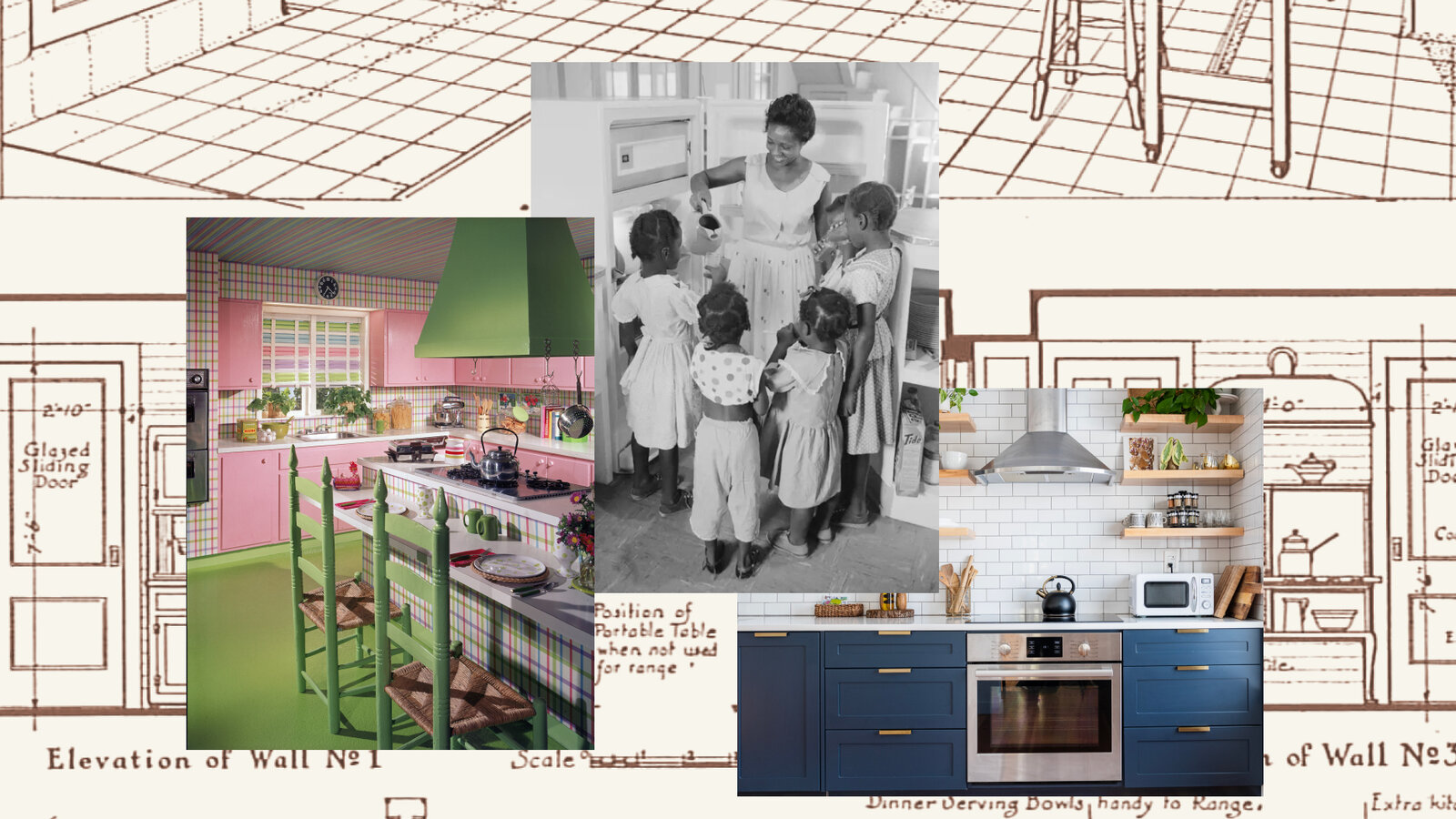1
915
With the industrial boom behind them, the U.S. government began to market homemaking as a modern science, claiming it was “just as useful to maid as to mistress.” Kitchens embraced mass‑produced metal stoves, early iceboxes, and electrification. The first countertop gadgets—automatic toasters and stand mixers—emerged, and home‑economics classes at the University of Maryland in 1926 questioned whether housework deserved the same respect as coal shoveling.
1920
The Hoosier Manufacturing Company released *The Kitchen Plan Book*, offering 50 blueprints from leading architects and draughtsmen. It showcased modular, factory‑made cabinetry, moving storage away from freestanding furniture and custom carpentry. Brent Hull noted the book’s promise to “simplify the work which a woman must do in her kitchen.”
1926
Architects began applying domestic science to kitchen design, inspired by Viennese architect Margarete Schütte‑Lihotzky’s compact, function‑driven “Frankfurt Kitchen.” Alexis Barr, a design historian, described its labeled drawers and fitted components as a precursor to IKEA. The concept of a “work triangle”—the ideal distance between stove, sink, and counter—was refined by the University of Illinois School of Architecture in the 1940s and remains a staple in kitchen layouts today.
1934
Frank Lloyd Wright introduced an early open‑concept kitchen for the Willeys in Minneapolis, allowing cooking and entertaining simultaneously. The half‑wall and large picture windows linked the kitchen to living spaces, proving that openness could coexist with economy and light.
1945
Post‑World War II suburban growth brought military‑derived materials into kitchens. Formica expanded its countertop patterns; plywood manufacturing surged. The era’s emphasis on convenience turned kitchens into modern, chic spaces, as Mr. Hull observed. A 1956 Bell Telephone film promoted Formica as an affordable kitchen upgrade.
1957
Amana launched a bottom‑freezer refrigerator, eliminating the need to crouch for produce. The brand, later part of Whirlpool, had pioneered side‑by‑side models a decade earlier. This shift introduced features like through‑door ice makers and French doors, moving beyond the single top‑freezer design that had dominated until the 1950s.
1963
Julia Child’s *The French Chef* debuted, showcasing a large, semi‑professional kitchen with a Garland gas range, peg board, and Le Creuset pots. The show’s popularity spurred viewers to purchase the equipment on screen, cementing Child’s kitchen as a cultural icon.
1978
General Electric introduced the first over‑the‑range microwave, combining a microwave and range hood. This appliance freed counter space and became a visual centerpiece in many American kitchens.
1983
Personal computers entered kitchens as part of the “command center,” a kitchen‑home‑office hybrid that kept families connected without leaving the cooking area. Lauren Tolles noted that the landline, mail, and homework could all coexist in this space.
1990
The term “McMansion” entered common usage. Kitchens shifted from purely functional rooms to decorative showcases, featuring luxurious cabinets, higher ceilings, and premium appliances like Viking or Wolf. The kitchen increasingly became the most expensive room in the house.
1999
The Manhattan restaurant Pastis, designed by Ian McPheely and Keith McNally, covered walls with reclaimed, glazed white subway tiles. Their durability and clean‑look made the style popular in American kitchens, evoking a sense of history.
2005
New homes embraced open‑concept kitchens that flowed into living areas, making the kitchen the central hub. Aurora Farewell, an architect, emphasized the importance of designing kitchens that feel integrated rather than isolated.
2011
*The Property Brothers* hit HGTV, popularizing DIY renovations. Coupled with social media and affordable retailers like IKEA, the show made design knowledge widely accessible. IKEA’s planners and ready‑to‑assemble cabinets lowered renovation costs and encouraged homeowners to tackle projects themselves.
2012
Imported flat‑packed cabinets, made from engineered wood, gained traction. While some criticized their quality, their low price made complete kitchen make‑overs possible for as little as $10,000.
2016
Marie Kondo’s organizing philosophy became a verb. With open kitchens losing wall storage, companies focused on decluttering solutions. The trend highlighted the trade‑off between openness and storage capacity.
2020
COVID‑19 lockdowns turned kitchens into classrooms and workspaces. Sarah Snouffer noted the strain of multiple people sharing a single area. The pandemic forced a reevaluation of kitchen use, with many families cooking more meals at home and buying in bulk, increasing storage demands.
2023
Post‑pandemic habits persist: bulk buying, home cooking, and the continued use of kitchen spaces for work or study. Wendy Trunz observed that some never returned to offices, leaving a permanent kitchen‑office hybrid.
2025
Designers are shifting toward warmer, more comfortable kitchens, moving away from stark minimalism. Islands are expanding or multiplying to provide flexible seating, power outlets, and storage. Architects like Farewell are adding pocket doors or framed openings to create privacy without fully closing off the space. She argues that the future kitchen may not be fully open, but rather a balanced blend of openness and separation.













